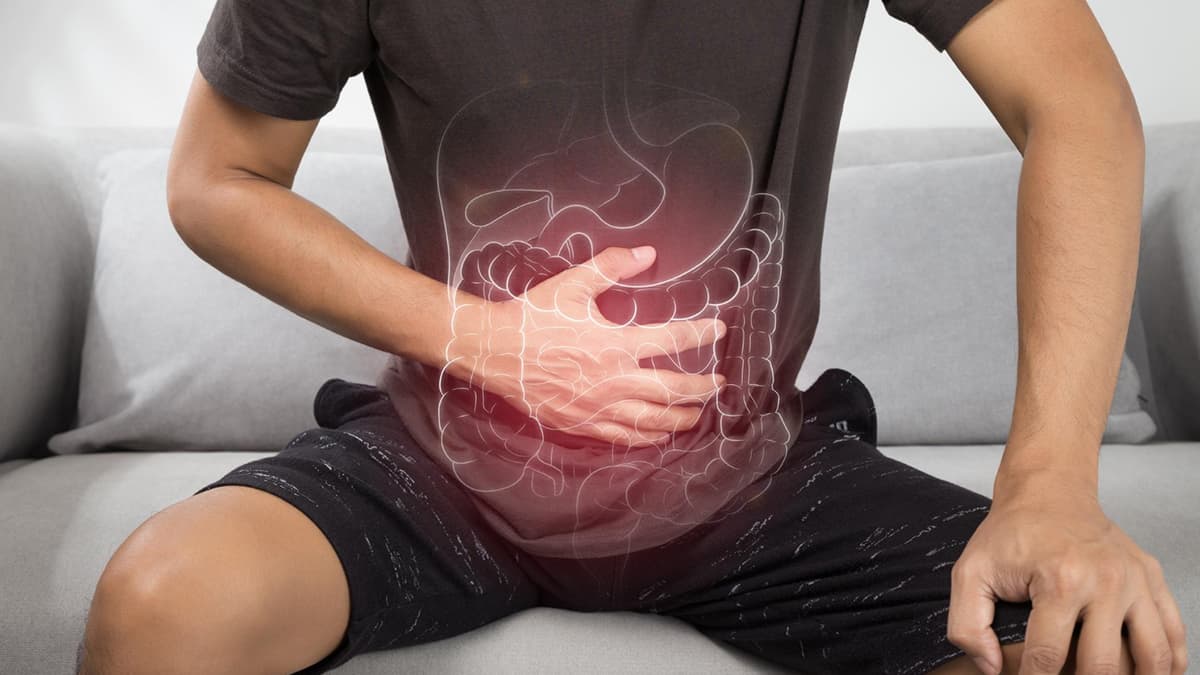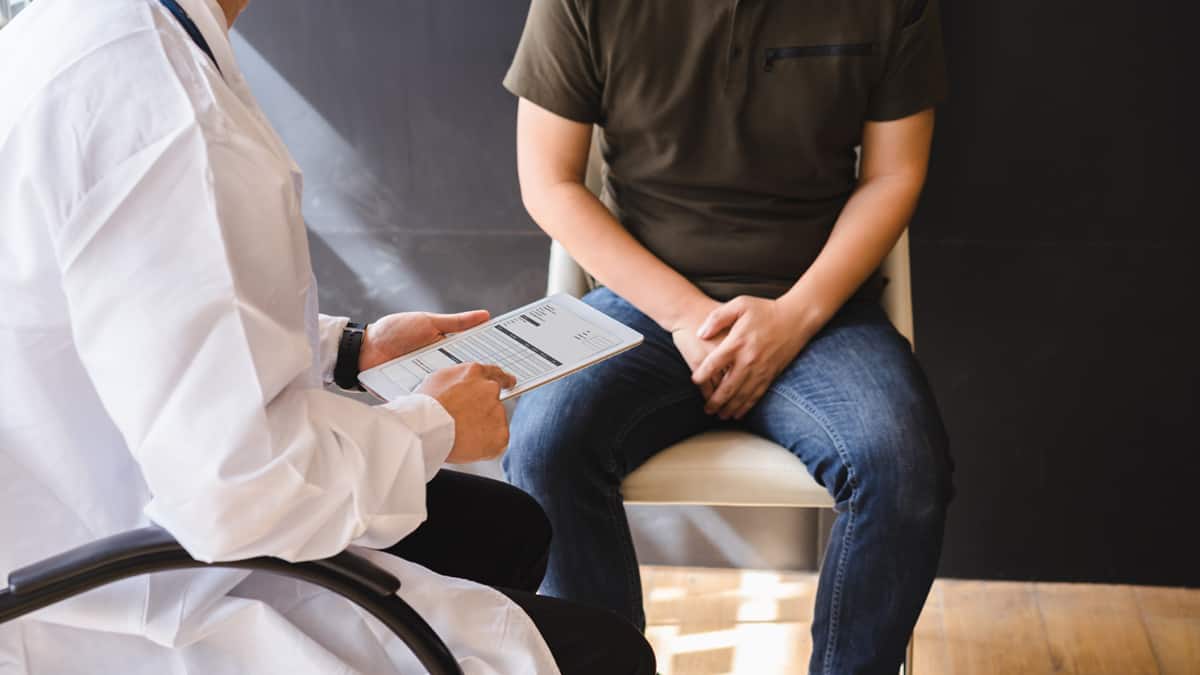How To Treat Constipation
Gastrointestinal Health

Most people will experience difficulty having a bowel movement (pooping) at some point in their life — this is known as constipation. It is common in children and adults, but it’s more common in people over 60 years old. Constipation can happen because of your diet, lifestyle, underlying conditions, or for no reason at all. There are several treatment options for constipation, but most people can manage their symptoms with a few simple lifestyle changes.
What Is Constipation?
Constipation can happen when your stool (poop) moves through your colon too slowly. When this happens, your colon can absorb too much water, making your stool hard. It can be a short-term (acute) or a long-term (chronic) problem.
Bowel movement patterns are different for everyone. In general, you may be constipated if you have three or fewer bowel movements per week.
The symptoms of constipation can include:
- Having fewer bowel movements than usual
- Hard, dry, or lumpy stools
- Straining to have a bowel movement
- Painful bowel movements
- Feeling like you still have to go after having a bowel movement
- Only passing small amounts of stool
What Are the Complications of Constipation?
In some cases, constipation can have other complications, including:
- Straining to push out your stool can cause hemorrhoids or rectal prolapse
- Forcing a large or hard stool can cause an anal fissure (a tear in the anus)
- Trapped stool can cause an infection called diverticulitis
- Long periods of constipation can cause a pile-up of hard stool called fecal impaction
Constipation can be a sign of a serious medical problem. Call your doctor if you notice any of the following:
- Constant or severe abdominal pain
- Blood in the toilet or on the toilet paper
- Constipation that lasts longer than three weeks
- Inability to pass gas (fart)
- Vomiting (throwing up)
- Fever
Who Gets Constipation?
People of all ages and genders get constipation. In the United States (US), about 16 percent of all adults have symptoms of constipation. It is more common in older adults over 60 years old — 33 percent in this group have symptoms of constipation. Up to 20 percent of adults in the US experience chronic constipation.
Some people are more likely to become constipated than others, including:
- Women
- Pregnant women
- Older adults
- People with mental health conditions such as depression or eating disorders
What Causes Constipation?
Constipation can be caused by many different things. However, sometimes there is no obvious reason.
The most common reasons for acute constipation are:
- Eating a diet low in fiber
- Being dehydrated
- Not enough physical activity
- Sitting or lying down for long periods of time
- Ignoring the urge to have a bowel movement
- Change in routine (like when traveling)
- Change in diet
- Stress or anxiety
- Being pregnant and for up to six weeks after giving birth
- Taking certain medications
Medications That Cause Constipation
Medications and dietary supplements that affect the muscles or nerves in your gut or that cause dehydration can cause constipation.
Some of the most common medications that cause constipation include:
- Opioid pain medications — such as codeine, hydrocodone, morphine, oxycodone, or tramadol
- Antidepressants — such as selective serotonin reuptake inhibitors (SSRIs) and tricyclic antidepressants
- Calcium channel blockers — such as diltiazem (Cardizem) or verapamil (Calan)
- Allergy medications — such as diphenhydramine (Benadryl)
- Urinary incontinence medications — such as oxybutynin (Ditropan)
- Dietary supplements — such as iron and calcium
Medical Conditions That Can Cause Constipation
The symptoms of some medical conditions can cause constipation.
- Colon or rectal blockage — caused by cancer, narrowing of the colon, anal fissures, or bowel obstructions
- Nerve problems in the rectum or colon — caused by spinal cord injury, multiple sclerosis, stroke, or nerve damage
- Problems with pelvic muscles — inability to relax and contract the pelvic muscles involved in having a bowel movement
- Hormone changes — caused by conditions such as diabetes, thyroid conditions, or pregnancy
- Irritable bowel disease (IBD) — such as ulcerative colitis or Crohn’s disease
- Cystic fibrosis
How Is Constipation Diagnosed?

Constipation is often diagnosed based on what you tell your doctor.
If you have chronic constipation, your doctor will use your medical and family history, physical exam, medical tests, and imaging studies to discover the reason for your constipation.
Medical and Family History
Your doctor will ask questions about your bowel movements to find out what your symptoms are. They may ask you questions such as:
- How often do you have a bowel movement?
- What does your stool look like?
- How long have you felt constipated?
- Do you see any blood in the toilet or on the toilet paper after going?
- Have you recently gained or lost weight?
Some medical conditions that cause constipation are passed down from your parents. Tell your doctor if anyone in your family has a history of cancer, especially colon cancer. You are twice as likely to develop colon cancer if a parent or sibling has had colon cancer. More than 10 percent of people with irritable bowel disease also have a family member with the disease.
Physical Exam
During a physical exam, your doctor may check your vital signs — blood pressure, pulse, temperature, and breathing rate. They may also use a stethoscope to listen to the sounds in your gut. Your doctor may perform a rectal exam.
Medical Tests
Depending on your medical history and symptoms, your doctor may order additional medical tests to help diagnose your constipation, such as:
- Blood tests
- Stool tests
- Urine tests
- Colonoscopy (inserting a small camera into the colon)
- Bowel function tests
Imaging Studies
If your doctor needs to see what is happening inside your body, they may order an imaging study to help find a diagnosis. Some common imaging studies used to diagnose constipation include:
- Computed tomography (CT) scan
- Magnetic resonance imaging (MRI) scan
- X-ray
How Is Constipation Treated?
There are many treatments available for constipation. Discuss the treatment plan for you with your doctor.
Diet and Lifestyle Changes
Most people can treat constipation by making a few diet and lifestyle changes.
The most common reason for constipation is not getting enough fiber or water in your diet. Simply increasing fiber and water can relieve constipation in some cases.
Fiber is not digested or absorbed into your bloodstream. Instead, it stays in your gut and increases the size and weight of your stool. Fiber also helps your stool keep some moisture, making it softer and easier to pass. More than 75 percent of people see improvement in their constipation by increasing fiber intake.
Depending on your age and gender, most people need between 22 and 34 grams of fiber daily. However, up to 95 percent of Americans don’t get the recommended amount of fiber every day.
It is important to know that if you are increasing your fiber intake, you also need to increase how much water you drink. If you are dehydrated, fiber may make constipation worse. The amount of liquid you need every day may be different based on your age, health, and the climate you live in. Talk to your doctor to find out how much fluid you should be drinking daily.
You may need to drink more fluids if you notice any of the signs of dehydration:
- Feeling thirsty
- Dark colored urine
- Urinating less often
- Dizziness
- Tiredness
Over-The-Counter Laxatives

If diet and lifestyle changes don’t relieve your constipation, there are several different types of laxatives available to buy without a prescription in the US.
You should talk to your doctor or pharmacist before taking any laxatives — especially if you have a history of bowel obstruction, IBD, or kidney disease. Some laxatives can interact with medical conditions and medications.
When taking over-the-counter laxatives, it is important that you follow the directions exactly as they are written on the package or as provided by your doctor. Also, note that different products may have slightly different directions.
Bulk-Forming Laxatives
Bulk-forming laxatives work in a similar way to dietary fiber. You may see them labeled as fiber supplements at the store. This is a good option if it is hard for you to get enough fiber in your diet. These laxatives work by increasing the weight of your stool and helping to retain water so your stool is softer. Bulk-forming agents usually relieve constipation in 2 to three days.
Examples of bulk-forming laxatives include:
- Psyllium (Metamucil)
- Methylcellulose (Citrucel)
Bulk-forming laxatives are well-tolerated by most people and safe for pregnant women. Abdominal bloating and gas are common side effects of bulk-forming laxatives. It is important to increase your water intake while you are using bulk-forming laxatives. Without enough water, constipation might get worse and lead to bowel obstruction. People that can’t drink enough water while taking bulk-forming laxatives should not take them.
Osmotic Laxatives
Osmotic laxatives work by drawing water into your bowels from your body, making your stool softer and easier to pass. They can take two to three days to work for most people.
Examples of osmotic laxatives include:
- Polyethylene glycol (Miralax)
- Magnesium hydroxide (Milk of Magnesia)
Side effects of osmotic laxatives include upset stomach, bloating, and gas.
Talk to your doctor or pharmacist before taking an osmotic laxative if you have kidney or heart disease. Magnesium hydroxide can interact with some medications.
Lubricant Laxatives
Lubricant laxatives, such as mineral oil, can help the stool pass through the gut by coating the stool with a waterproof film so it keeps moisture and stays soft. It can take one to three days to relieve constipation using a lubricant laxative.
Mineral oil is generally well-tolerated, but it can cause pneumonia if it is breathed into the lungs.
Stool Softeners
Stool softeners work by helping water get into the stool so that it is softer and easier to pass. They usually take one to three days to relieve constipation.
Docusate is an example of a stool softener. It is commonly sold under the brand name Colace.
Most people do not have any side effects while taking docusate.
Stimulant Laxatives
Stimulant laxatives encourage the muscles in your gut to move your stool along. They can start working in as few as 6 to 12 hours. Stimulant laxatives are usually used only for severe constipation that isn’t relieved by other treatments.
Examples of stimulant laxatives include:
- Senna (Senokot)
- Bisacodyl (Dulcolax)
Stimulant laxatives can also be combined with stool softeners. The combination of docusate and senna is commonly sold under the brand name Senokot-S.
Abdominal pain and cramping are common side effects of stimulant laxatives. If stimulant laxatives are used too often, it can be difficult to have a bowel movement when you stop taking them. Talk to your doctor if you can’t go to the bathroom without taking a stimulant laxative.
Enemas and Suppositories
An enema involves squirting liquid (like water or saline solution) into the rectum to make the stool softer and help pass it. This method works within minutes to hours.
Suppositories are inserted into the rectum, where they melt. Glycerin suppositories can provide lubrication and soften the stool. Suppositories made of bisacodyl help to stimulate the muscles in the colon to push out the stool.
Prescription Medications
For people with chronic constipation that isn’t helped by diet and lifestyle changes or other laxatives, there are some prescription medications available.
Secretagogues like lubiprostone (Amitiza), linaclotide (Linzess), and plecantide (Trulance) work by drawing water into your bowels to make your stool softer.
Prucalopride (Motegrity) is a prokinetic agent that works by stimulating your gut to contract and move your stool through.
People without cancer who experience chronic constipation from long-term use of opioid pain medications may be prescribed an opioid antagonist such as methylnaltrexone (Relistor), naloxegol (Movantik), or naldemedine (Sympronic).
Biofeedback
Your doctor may recommend biofeedback therapy if you have problems with the muscles that control bowel movements. This therapy involves working with a therapist to train the pelvic floor muscles to relax and tighten.
Surgery
You may need surgery if you have severe constipation caused by a blockage or if part of your colon must be removed because it is not working properly.
6 Ways to Prevent Constipation

Constipation can be difficult to treat once it happens. A few changes to your diet and activity can go a long way toward preventing constipation.
1. Eat More Fiber
It can be difficult to get enough fiber in your diet. You can find dietary fiber in fruits, vegetables, whole grains, and legumes. Eating more fiber can also help lower your cholesterol, control your blood sugar, and maintain a healthy weight.
Try adding some of the following high-fiber foods to your diet.
- Fruits — like apples, pears, berries, and bananas
- Vegetables — like broccoli, peas, carrots, and potato (with skin)
- Popcorn (unsalted)
- Oatmeal
- Brown rice
- Black beans
- Lentils
- Nuts and seeds
2. Drink Plenty of Fluids
Staying hydrated will help keep your stools softer and easier to pass. It's best to get your fluids from water, clear broth, and naturally sweetened fruit and vegetable juices.
3. Stay Active
Physical activity can get your blood pumping and your gut moving. I recommend at least 150 minutes of physical activity per week. A daily walk counts as physical activity.
4. Keep a Schedule
Try to go to the bathroom at the same time each day to stay regular.
5. Don’t Ignore the Urge
If you feel the urge to have a bowel movement, try to go as soon as possible. If you repeatedly ignore it, it can make it harder to go in the future.
6. Get Prepared
Sometimes, you can anticipate situations that can cause constipation. If you know that you will have a change in your routine (like when you are traveling) or if you are starting a new medication that can cause constipation, prepare early. Stock up on high-fiber meals and snacks and increase your fluid intake to get ahead of constipation before it happens.